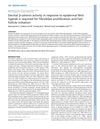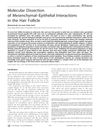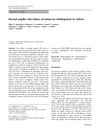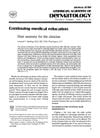Hair Follicle Signaling Networks: A Dermal Papilla–Centric Approach
September 2013
in “
Journal of Investigative Dermatology
”
dermal papilla hair follicle DP cells hair restoration therapies DP lineage commitment Tbx18-driven Cre knock-in lines DP precursor cells androgenic alopecia DP transcriptional master regulators induced pluripotent stem cells iPS cells DP-specific Cre lines alopecia hair restoration Tbx18 Cre lines hair loss
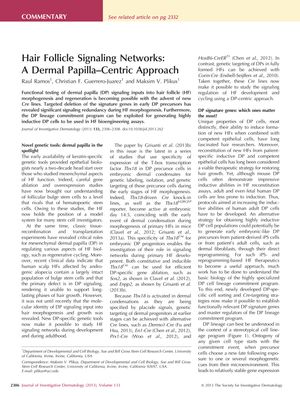
TLDR The document concludes that dermal papilla cells are key for hair growth and could be used in new hair loss treatments.
The document from 2013 focuses on the importance of dermal papilla (DP) cells in hair follicle (HF) development and regeneration, emphasizing the potential of genetic tools to study DP signaling networks. It was discovered that there is significant signaling redundancy during HF morphogenesis when signature genes are deleted in early DP precursors. The paper suggests that DP cells could be bioengineered for hair restoration therapies by exploiting DP lineage commitment programs. Novel genetic tools, like Tbx18-driven Cre knock-in lines, have facilitated the study of DP precursor cells in primary HF development. The document also discusses the possibility of using DP transcriptional master regulators to create patient-specific DP cells from induced pluripotent stem (iPS) cells, potentially leading to new treatments for androgenic alopecia. Future research using DP-specific Cre lines is expected to identify key DP lineage regulators, which could enhance hair follicle bioengineering approaches for treating alopecia. Additionally, the document references a population-based study that found no increased risk of cardiovascular disease in psoriasis patients, but notes the study's limitations due to the small sample size and the mild nature of the psoriasis in the participants.

